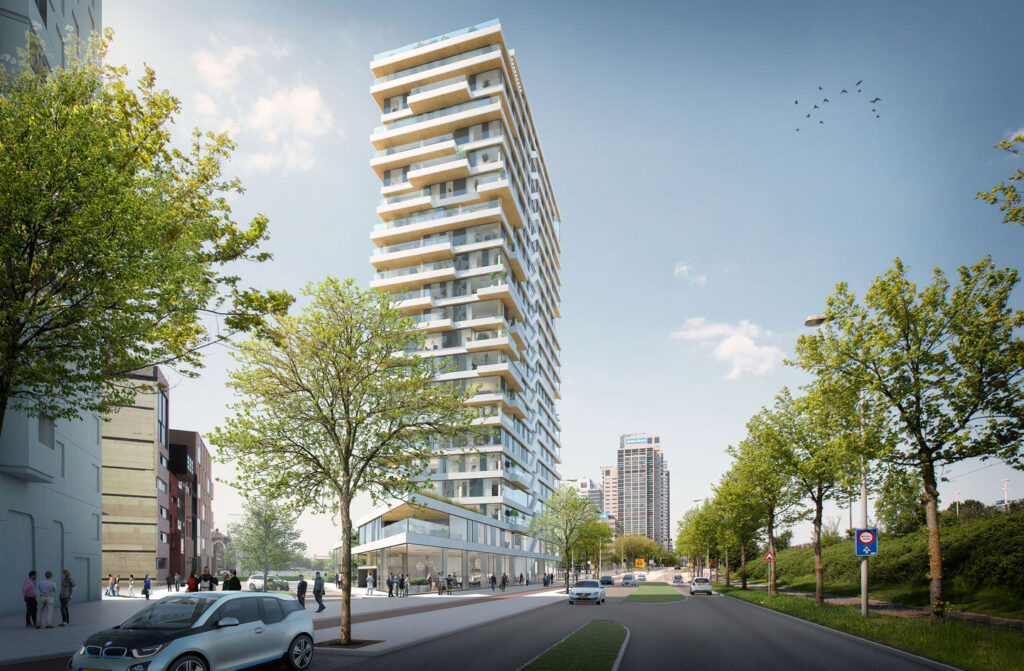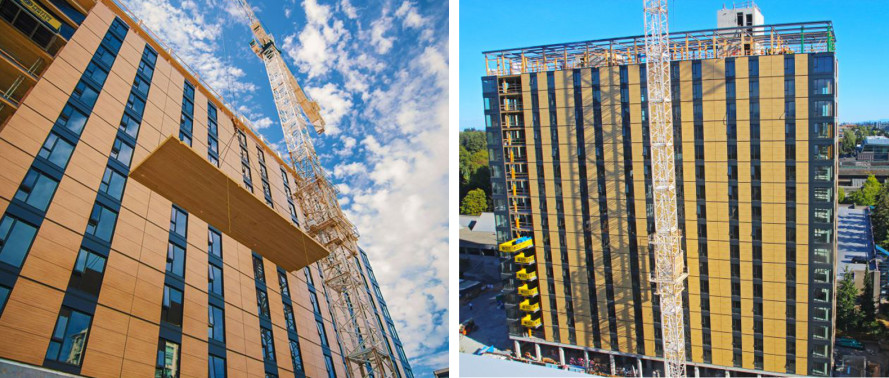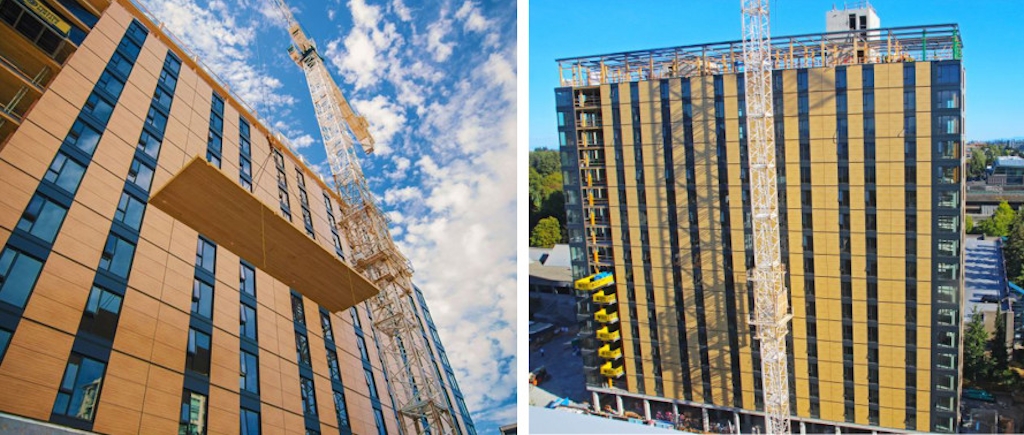Both Forbes and The Economist recently touted the opportunities in building with wood, advocating the new way to build is with mass timber products. The Economist article “Top of the trees” opens with a description of a pagoda in Japan, a building that has withstood natural elements such as storms and earthquakes for over 1,400 years. This remains the inspiration for many of today’s modern wood buildings. How can we build with wood in a way that will withstand rain, fire, and earthquakes? And will it be safe?

(Design for the 21-story high Haut building in Amsterdam. Photo credit: Team V Architectuur)
The answer is to build with mass timber, a term which applies to wood products that are engineered to be strong, durable, fire-resistant, and safe. These engineered wood products have been used for decades and research continues to be done on ways to improve them. The architecture firm Skidmore, Owings & Merrill along with Oregon State University recently showed how strong engineered wood can be. The researchers used cross-laminated timber (CLT) with a thin layer of reinforced concrete spread across the surface in a hybrid form known as concrete-jointed timber. Pressure was applied to the CLT panel to test its weight capacity. The floor began to crack once 8 times the designed load was applied. (Read more about this experiment in Testing Mass Timber)
In Forbes’ Tree Houses: Is Wood Really The Future Of Skyscrapers?, Laurie Winkless dives further into the future of mass timber. Winkless describes the potential shift of building with wood instead of steel and concrete and what that means for the environment. The production process for steel and concrete are energy-intensive and highly-polluting, putting wood above them in terms of environmentally friendly materials. But it is quickly pointed out that in order to be truly ecofriendly, this wood should be sourced from regulated, certified forests that are managed carefully with a larger number of new trees growing than harvested. (Read more about the connection between sustainable forestry and building with wood on New England Forestry Foundation’s blog Into the Woods)

(The newly built Brock Common at University of British Columbia. Photo credit: Unknown)
So what does this mean for the future of tall buildings? The number of mass timber buildings around the world is growing, as is the height. Brock Commons, the 18 story tall dormitory at University of British Columbia recently reached a milestone in construction. It currently holds the title of tallest wood building in the world, but will soon be beat out by the 21-story HAUT in Amsterdam. One thing is sure: mass timber buildings are here to stay.


